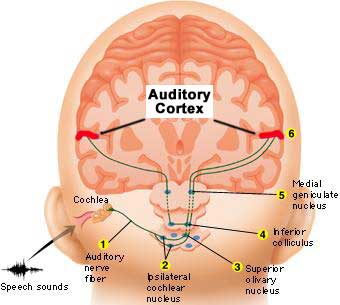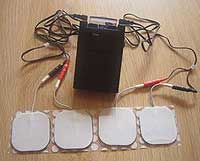By Barry Keate
Barry Keate, has lived with tinnitus over 40 years and has published 150+ research articles on numerous aspects of tinnitus. He is an expert on the condition and a well-known advocate for those with tinnitus.
I am often asked to explain why someone’s tinnitus may vary dramatically. Many people have tinnitus that changes from day to day, or is worse during specific times of the day. Some will have worse tinnitus after waking from a nap. Others will be fine on awakening but the sounds get progressively louder during the day. Some will experience increased tinnitus if they move their body, head or jaw in a certain way.
Recently, one person reported his tinnitus was not present upon waking but as soon as he started walking, it became severe.
There are many possible explanations for some of this. Stress levels, increased salt in the diet, and other environmental or disease factors may account for some short-term changes. However, for many of these people the answer may be what is termed somatic tinnitus.
Somatic Tinnitus
Somatic tinnitus is a condition where the sensory system in the body can cause, worsen, or influence tinnitus in some way. The word somatic is from the Greek meaning “of the body.” Somatic signals are sensory signals and are generated from muscle position sensors in the face, neck, head, trunk, arms, tongue, and the temporomandibular joint (TMJ).
One of the most common disruptive somatic signals occurs with muscle spasm of the sternocleidomastoid muscle (SCM).1 This is the large muscle under the ear on both sides of the neck that acts to rotate the head. For some patients, anything that causes torsion of the neck, such as using a pillow at night, bending the neck to look through a microscope, or any number of activities, causes a muscle spasm that produces tinnitus. The spasm and resultant tinnitus may not happen immediately but can start several hours after the neck is twisted.
(SCM).1 This is the large muscle under the ear on both sides of the neck that acts to rotate the head. For some patients, anything that causes torsion of the neck, such as using a pillow at night, bending the neck to look through a microscope, or any number of activities, causes a muscle spasm that produces tinnitus. The spasm and resultant tinnitus may not happen immediately but can start several hours after the neck is twisted.
A very small number of people can modulate tinnitus by movements of their eyes. This is known as gaze-evoked tinnitus.
Dental problems and TMJ dysfunction are other frequent causes of tinnitus. Tooth abscesses or impacted wisdom teeth can cause tinnitus. TMJ dysfunction occurs when the lower jaw is out of alignment with the skull.
Somatic tinnitus usually occurs in one ear only. There are a number of tinnitus properties that suggest a somatic component:
1 – Intermittency,
2 – Large fluctuations in loudness,
3 – Variability of location,
4 – Daily pattern,
5 – No hearing loss but head, neck, or dental insult.
Dorsal Cochlear Nucleus (DCN)
The dorsal cochlear nucleus (DCN) is the first synapse, or relay point, that auditory signals go through on their way to the auditory cortex for further processing. It is located at the base of the brain. Dorsal simply refers to the back of the cochlear nucleus.

The DCN is the most important brainstem region for relaying auditory signals to the auditory cortex area of the brain. It receives auditory signals from the hair cells in the cochlea, where sound is detected, as well as signals related to eye movements. It also receives the above-mentioned signals from muscle position sensors and relays these to other areas of the brain.
Sensory data from muscles and acoustic data from the ears are both relayed to the brain at very nearly the same point in the brainstem.
The DCN can be damaged in a number of different ways. Noise trauma causes damages, as well as blows to the head, whiplash, TMJ dysfunction, grinding teeth (bruxism), muscle spasm, or some disease states. Researchers currently believe that once the DCN is damaged, neuronal structures enter a hyperactive state and cross talk occurs between the auditory and sensory signals. This is when sensory input can affect auditory input and cause, worsen or otherwise modulate tinnitus.2
Even though the sound and physical sensations appear to be emanating from the ear, researchers believe that the nerve impulses are generated not in the ear itself, but in the DCN. Because the DCN is so important in tinnitus, it is often said that tinnitus is primarily a brain phenomenon. Proof of this is that tinnitus can still occur after the auditory nerve has been cut. About 50% of those patients, who are now completely deaf, still experience tinnitus.3
Robert Levine, MD states that somatic modulation of tinnitus is very common in clinical tinnitus patients. In a study of 70 consecutive patients in his tinnitus clinic, he found that 68% could somatically modulate their tinnitus with head or neck maneuvers.4 When he added jaw maneuvers to the test battery, the percentage of those who could somatically modulate their tinnitus rose to 80%.5
Author’s Note: I cannot modulate my steady-state tinnitus by motions of my head, neck or jaw. However, if I thrust out my lower jaw I create a new tinnitus sound that continues until I relax the jaw. So I can create a separate, somatic tinnitus by jaw motion.
Treatment Options
There are several treatment options for somatic tinnitus. Most involve relaxing the muscles that may be causing tinnitus. For those with TMJ dysfunction, there are treatments beginning with a bite guard to align the TM joint.
Dr. A. Bjorne at Ystad Hospital in Sweden has developed treatments for somatic tinnitus that range from bite guards to stretching and relaxation exercises that can be done at home.6 Treatment of the muscle tension in the jaw and neck shows a significant reduction of tinnitus severity.
Somatic tinnitus can also originate in the upper cervical area of the spine. In this case, a cervical collar can be helpful.
Biofeedback has been found to be very helpful for this type of tinnitus. In biofeedback, muscle signals are monitored and fed back to the patient through a computer. The patient is able to gradually learn to control muscles that had previously been beyond control. There are biofeedback clinics in all major US cities.
Another treatment option is Transcutaneous Electrical Nerve Stimulation (TENS). These portable devices are connected to the skin using electrodes. They are attached to the skin close to the ear and, as a current is passed through, they augment the inhibitory action of the DCN, reducing tinnitus.

One small study showed 46% of participants had improved or completely resolved tinnitus using a TENS unit.7 Patients used the units at home for two hours per day over two weeks time. Intermittent “typewriter” type of tinnitus was the most responsive. Somatic tinnitus without otologic disease had better response than tinnitus associated with otologic causes.
References
1 – Tinnitus: Pathology and Treatment, Langguth et al, eds. Progress in Brain Research vol. 166 (2007).
2 – Levine RA. Somatic (craniocervical) tinnitus and the dorsal cochlear nucleus hypothesis. Am J Otolaryngol. 1999 Nov-Dec;20(6):352-62.
3 – http://brneurosci.org/tinnitus.html
4- Levine RA. Somatic modulation appears to be a fundamental attribute of tinnitus. In: Hazell J, editor. Proceedings of the Sixth International Tinnitus Seminar. London: The Tinnitus and Hyperacusis Centre; 1999. P. 193-7.
5 – Levine RA, Abel M, Cheng H. CNS somatosensory-auditory interactions elicit or moderate tinnitus. Exp Brain Res 2003;153:643-8.
6 – http://www.tinnitusresearch.org/en/meetings/files2006/Bjorne-Treatment_of_Somatic_Tinnitus.pdf
7 – Herraiz C, Toledano A, Diges I. Trans-electrical nerve stimulation (TENS) for somatic tinnitus. Progress in Brain Research Vol. 166, 2007, Pages 389-394, 552-553.
Get Free Shipping!
Order now and get free shipping on either the Tinnitus Starter Kit or Combo Pack. Try the doctor recommended products with clinically proven ingredients for tinnitus. No coupon code required.

